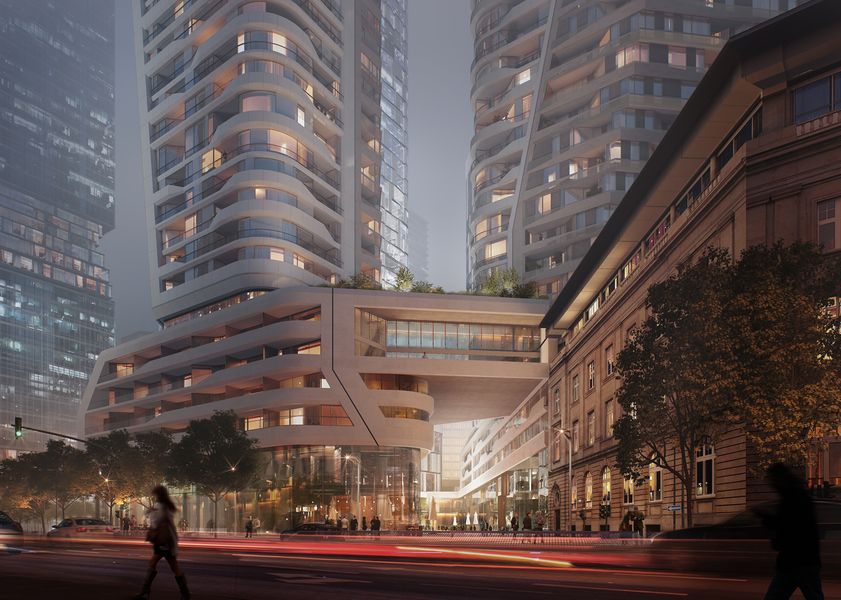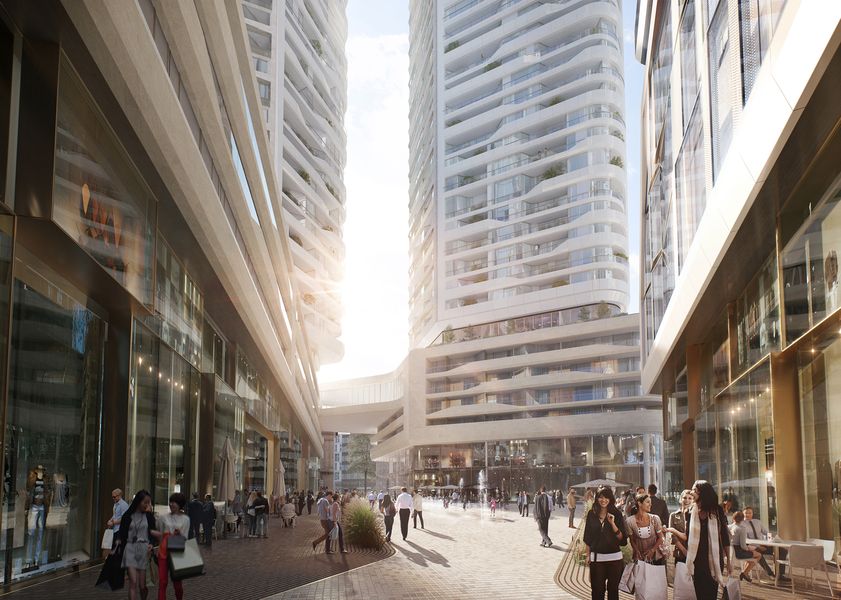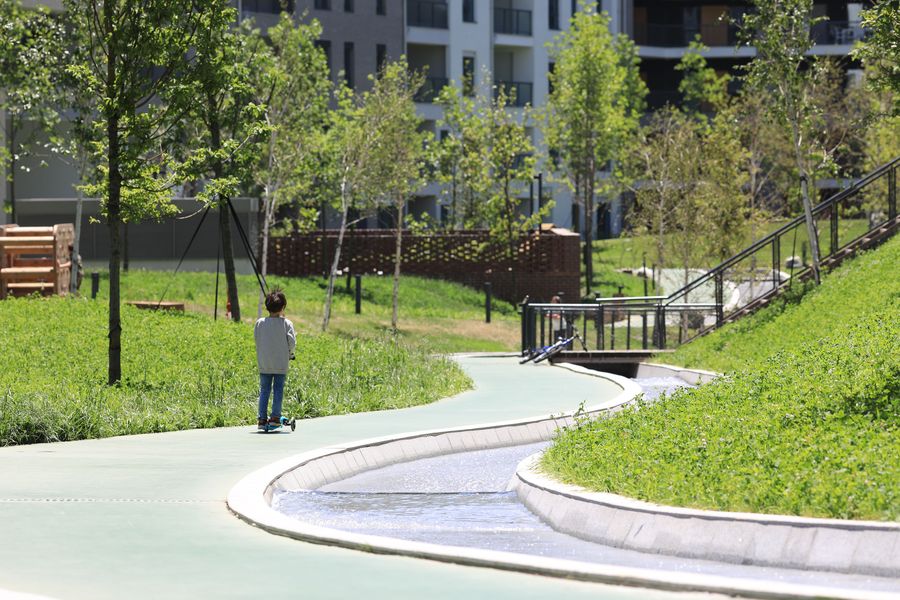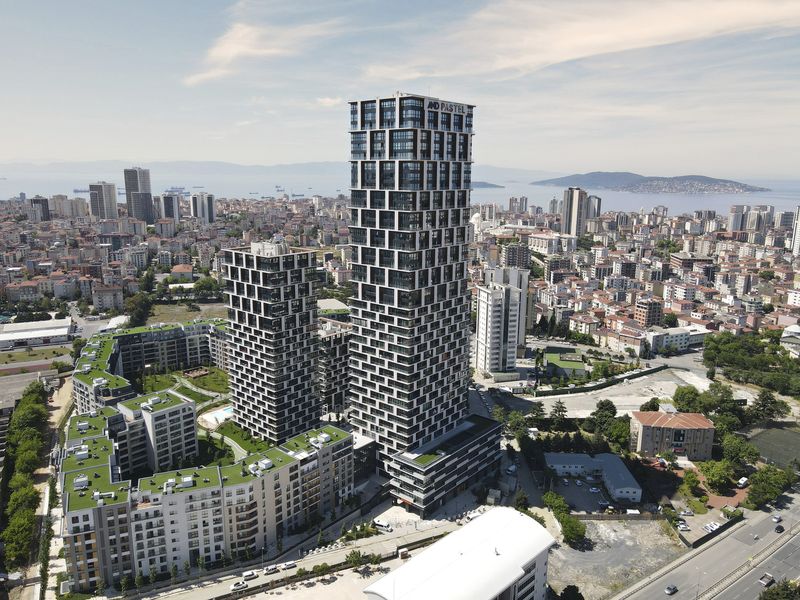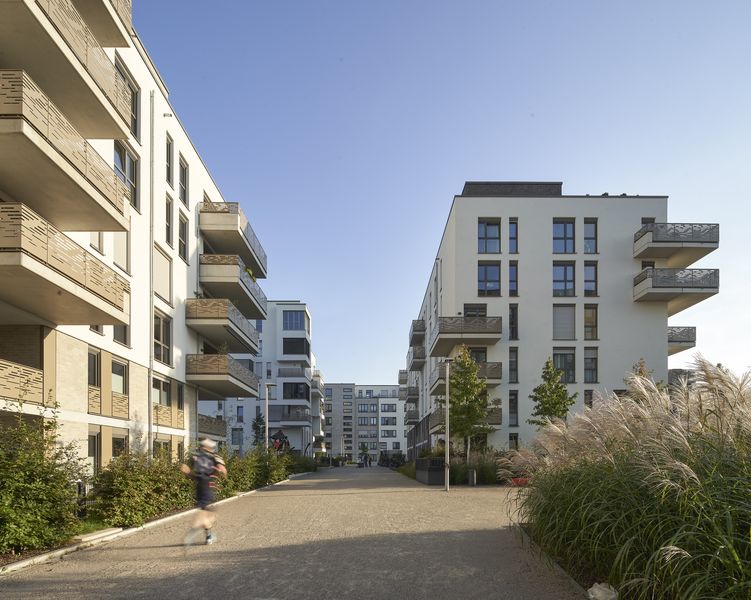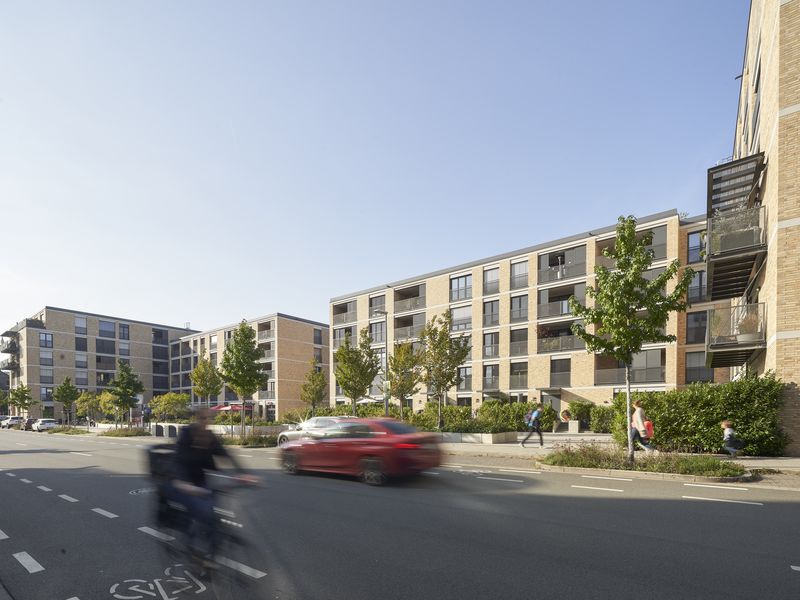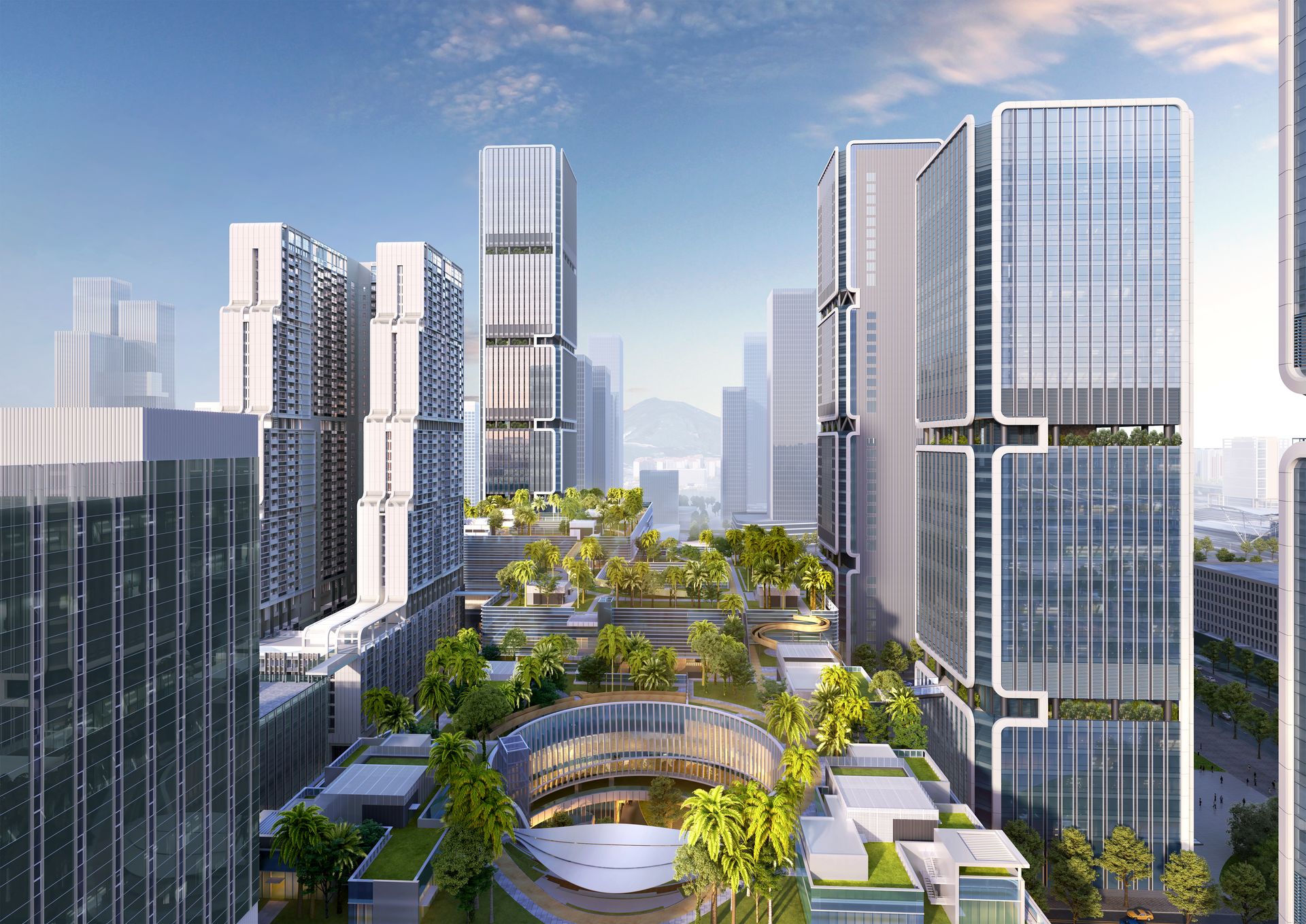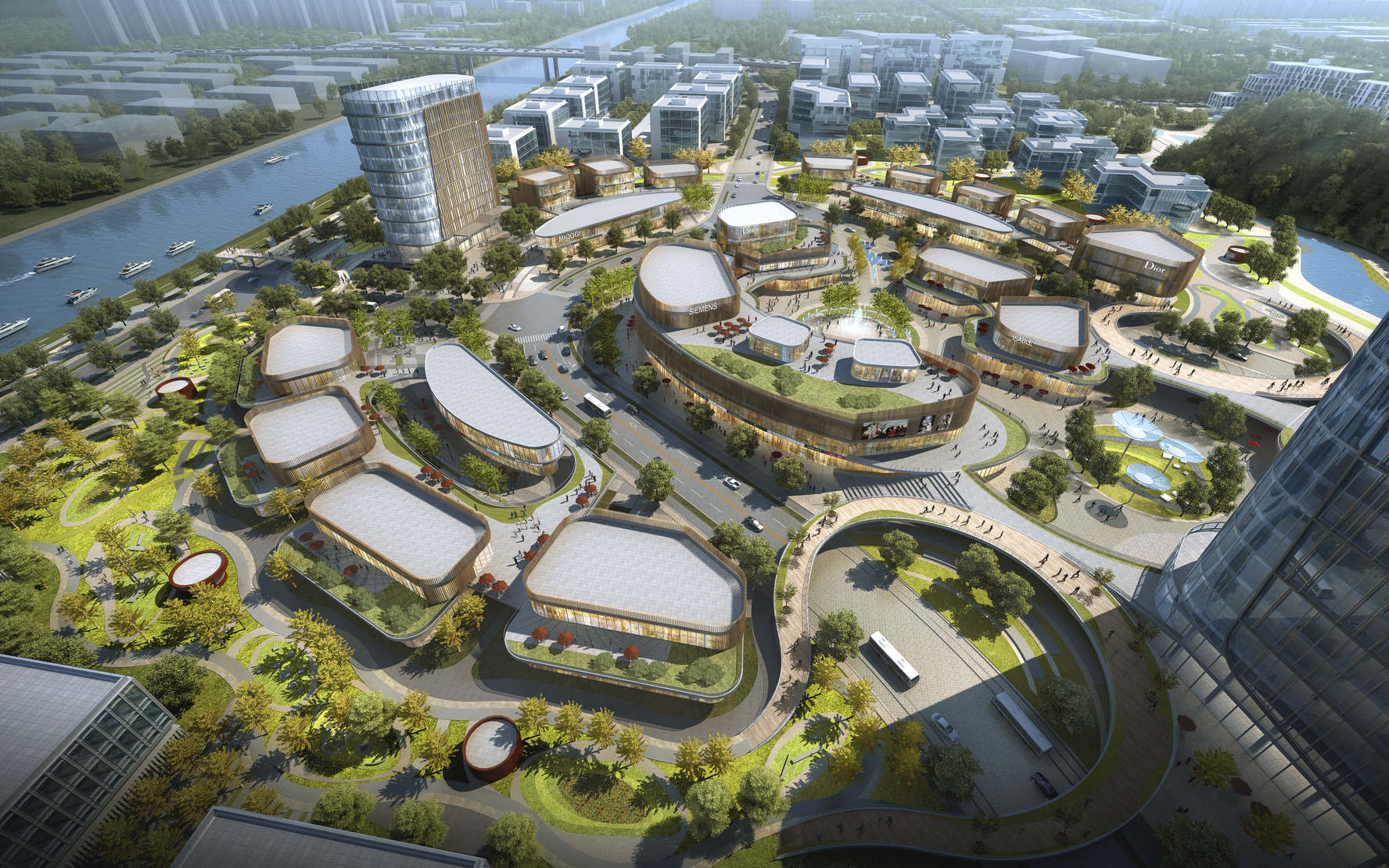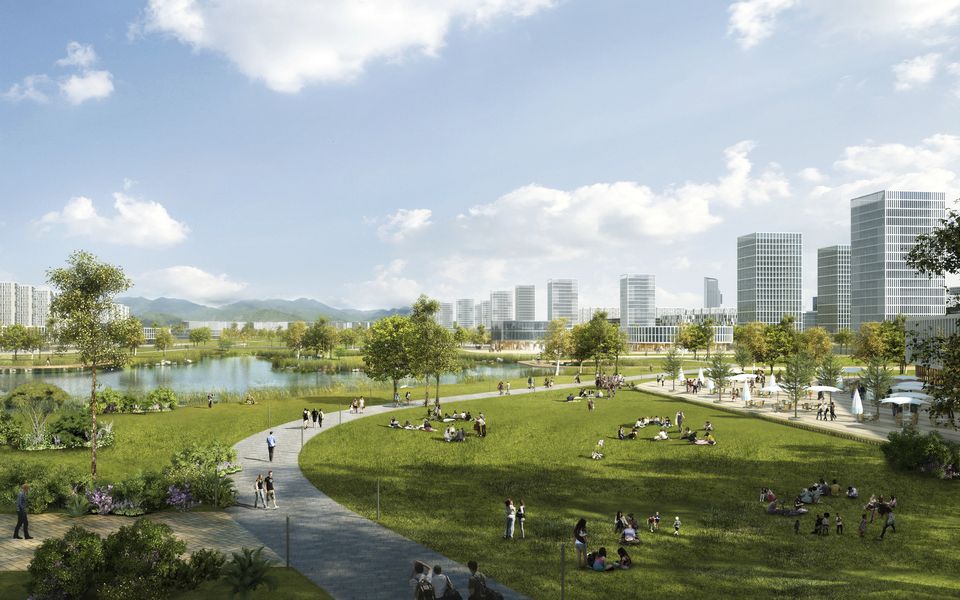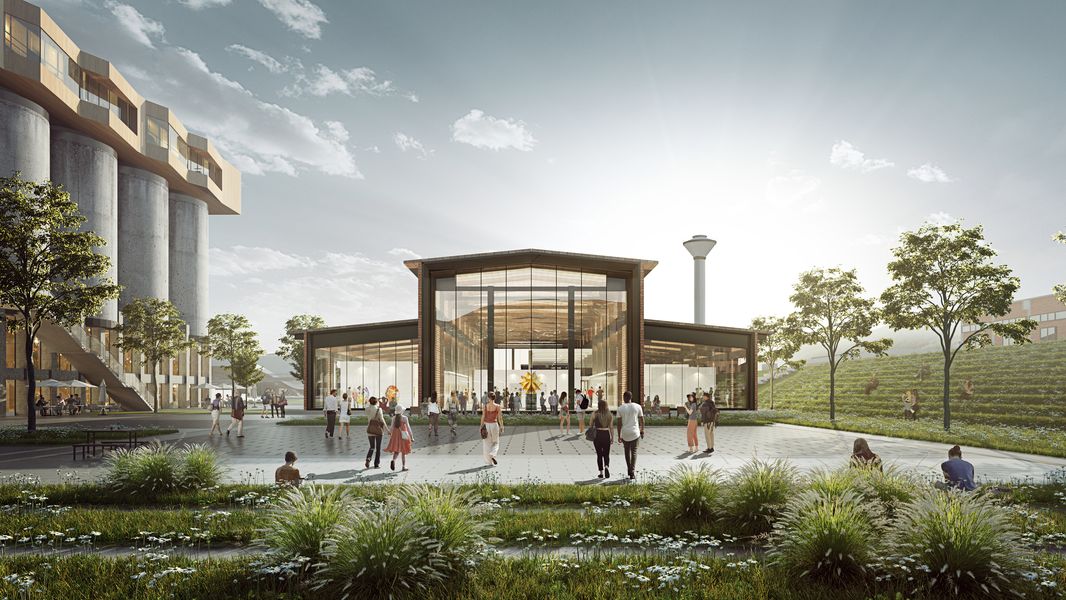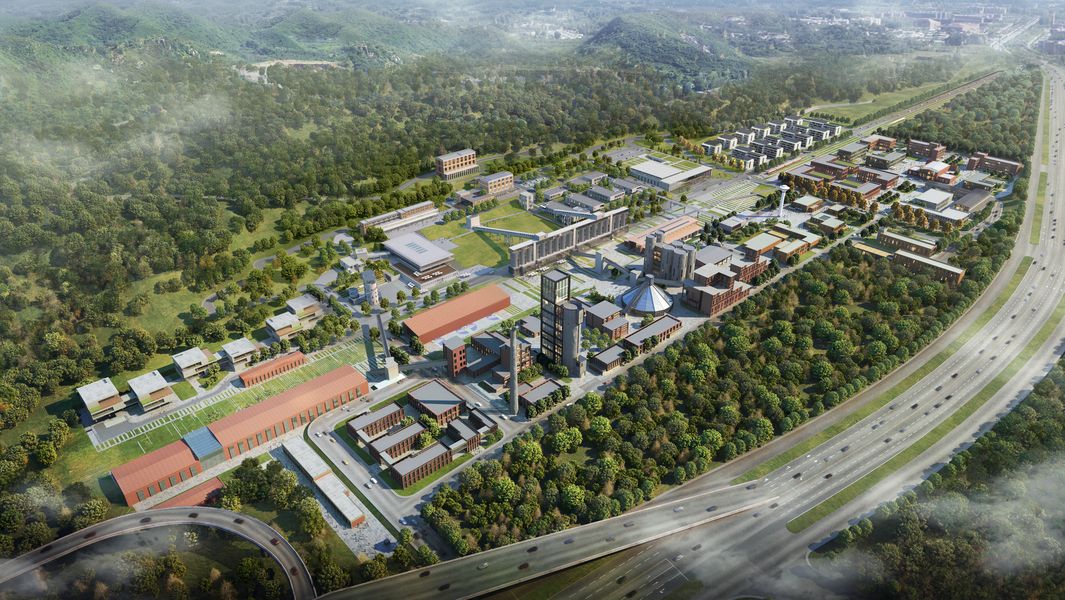A city worth living in
Sustainable and smart

Developing new neighbourhoods and the urban environment
Smart Cities is a term often used to describe digitalised cities. In times of climate change and demographic upheavals, planning the cities of the future is about much more than networked households.
For us, Smart City means a sustainable, multifunctional city worth living in.
The global climatic changes show us the limits and consequences of our actions. A strictly performance and profit-oriented approach in the construction industry is not adequate for our future living spaces. We must answer the questions that climate change, migration and our mobility raise in terms of urban development.
We deal with these questions on a variety of planning levels: In Germany, we work primarily at the neighbourhood level, in China on the conception of entire cities.
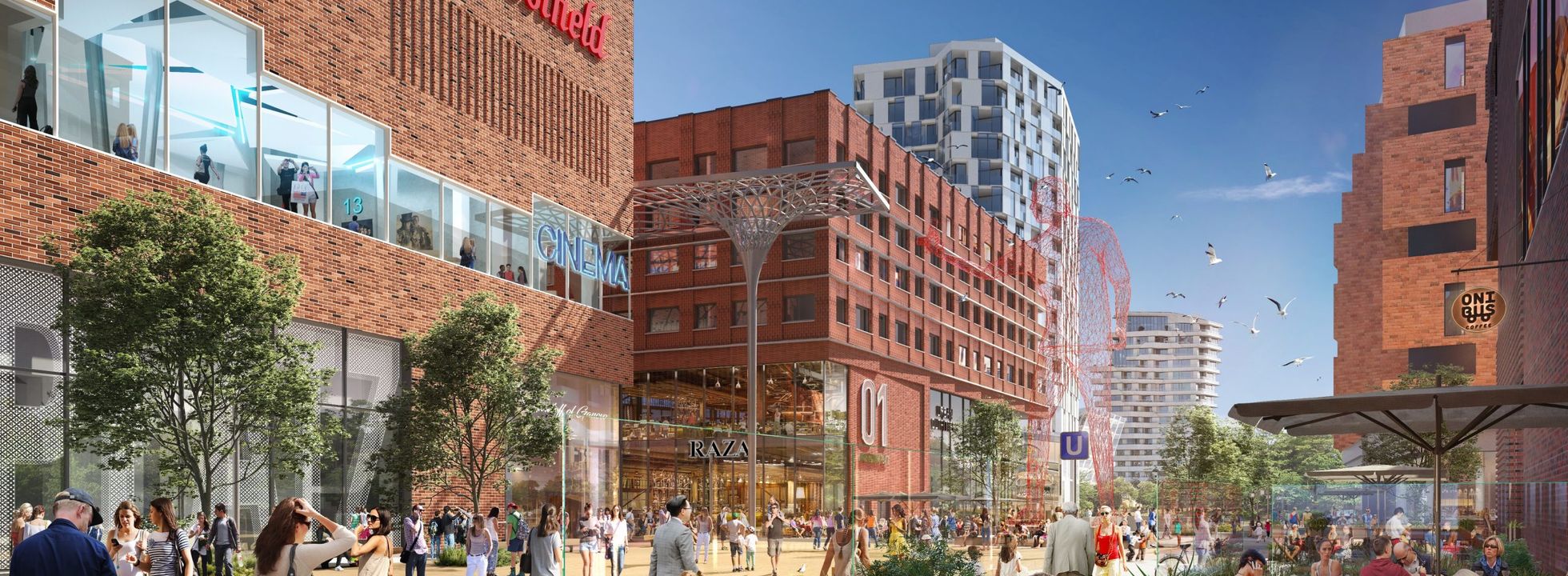
Südliches Überseequartier, Hamburg
Integrated master planning for 6 typologies and 11 buidlings covering 410,000 m²
Reviving the inner cities
The construction boom of recent years has not only led to numerous new buildings in the city centres, but also to the revitalisation of entire neighbourhoods. Areas of abandoned industrial areas, facilities (e.g. freight yards) or office structures that cannot be revitalised are being developed into new mixed-use areas, partly due to the lack of housing.
The following applies: the denser the urban landscape, the greater the mix of uses.
Our projects Four Frankfurt and Südliche Überseequartier in Hamburg show this particularly clearly: living, working, shopping and discovering combine to create lively, innovative and sustainable neighbourhoods.
The planning priorities of accessibility, materiality, flexibility and networking of public areas and routes are particularly conducive to sustainability. Whether at the neighbourhood level or for the entire city, these topics are relevant at any scale.
AND Pastel, Istanbul
Bismarck Quartier, Düren
Four Frankfurt, Frankfurt am Main
Gateway Gardens, Frankfurt am Main
H27 Wohn- und Geschäftshaus, Düsseldorf
Hochschule Ruhr West, Mülheim an der Ruhr
Louis am Park, Adler Quartiere, Frankfurt am Main
MesseCity, Cologne
Parc du Sud, Wohnquartier Manfredstraße Rüttenscheid, Essen
Quartier Central, Düsseldorf, u.a. mit Pandion D’Or und 25hours Hotel
Quartierseingang Vogelkamp, Hamburg
Südliches Überseequartier, Hamburg HafenCity
University of the Performing Arts, Cologne
Vodafone Campus, Düsseldorf
Wohnquartier Grafental, Düsseldorf
Wohnquartier Herbertzstraße, Krefeld
Cities for satisfied residents
The Chinese Governement today calls for concepts for architecture and urban development that focuses on the satisfaction of future residents and their being implemented in a top quality manner.
There will be no more isolated satellite or commuter cities in the conglomeration of economic centers. Rethinking in terms of sustainable use of resources has also long since arrived in China, for example every fourth solar panel in the world is now being installed in China.
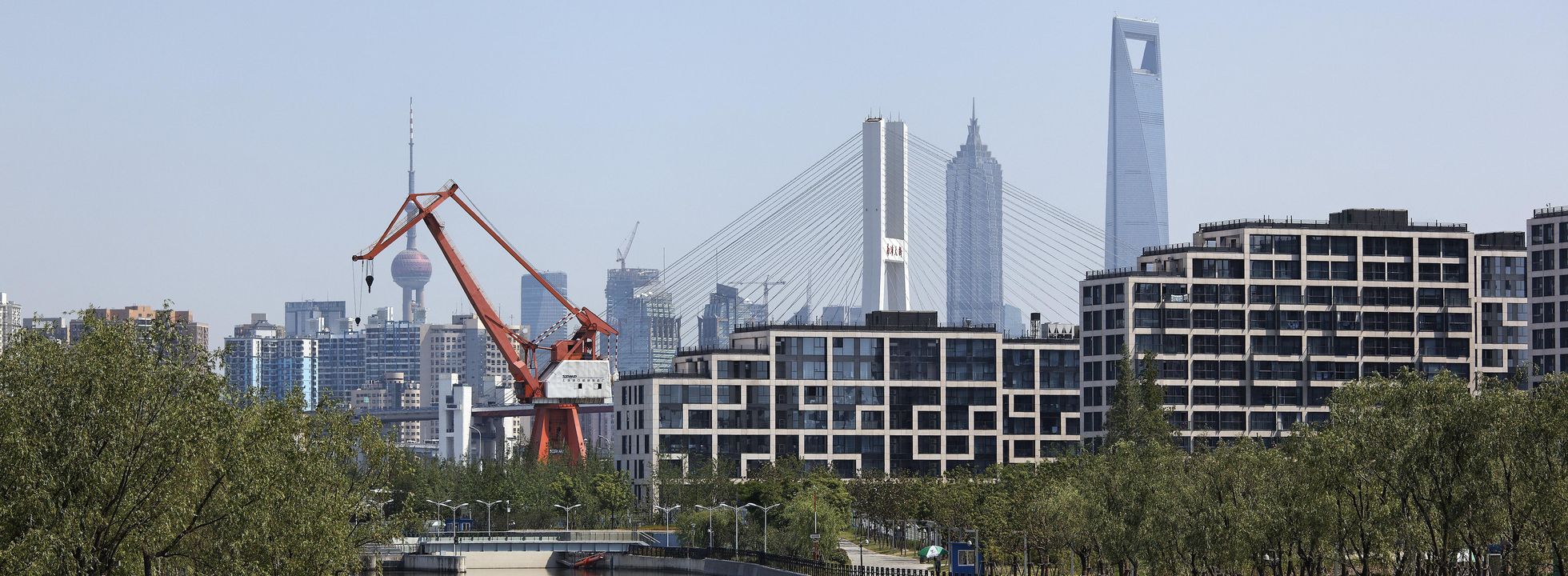
Expo Village, Shanghai
Sustainable conversion of an industrial waste land into a lively, urban city district
Smart City Design
Megatrends do not only create challenges, they also offer numerous new design possibilities: Mobility concepts enable pedestrian-friendly cities with a high quality of life. Building automation enable buildings to save energy through adaptive consumption depending on the time of day and intensity of use.
Multifunctional neighbourhoods are being networked through the digitalisation of the various services on offer: From an overview of parking spaces or renting conference rooms to pre-ordering goods in adjacent buildings.

Smartness check
Benchmarking with comparable projects is part of our methodology in urban development. We analyse completed urban designs that are similar in size and purpose to our task and check the results for smartness, using numerous 3D studies; digital and modeled. This systematic approach allows the best design for the future city.
Accurate analysis and data-driven planning
We work with latest analysis tools (GIS, Ecotect, Envi-met) and base our planning on the data of these geoinformation systems, area sampling surveys and remote sensing.
Density and variety
One of the challenges in Chinese urban development in particular, is how to deal with the enormous density of existing urban structures. They often lack any human scale, diversity or references to the surroundings as well as continuous public space.
Our solution is to combine various degrees of density: Different volumes are combined within a block in order to increase permeability and ensure development not only at the edges of the space. The "permeability of the blocks" also includes the continuation and extension of the open urban spaces to develop their through the entire city.
Compaction also includes the mix of uses and so for example, we combine office, commercial and hotel uses within the same building or block.
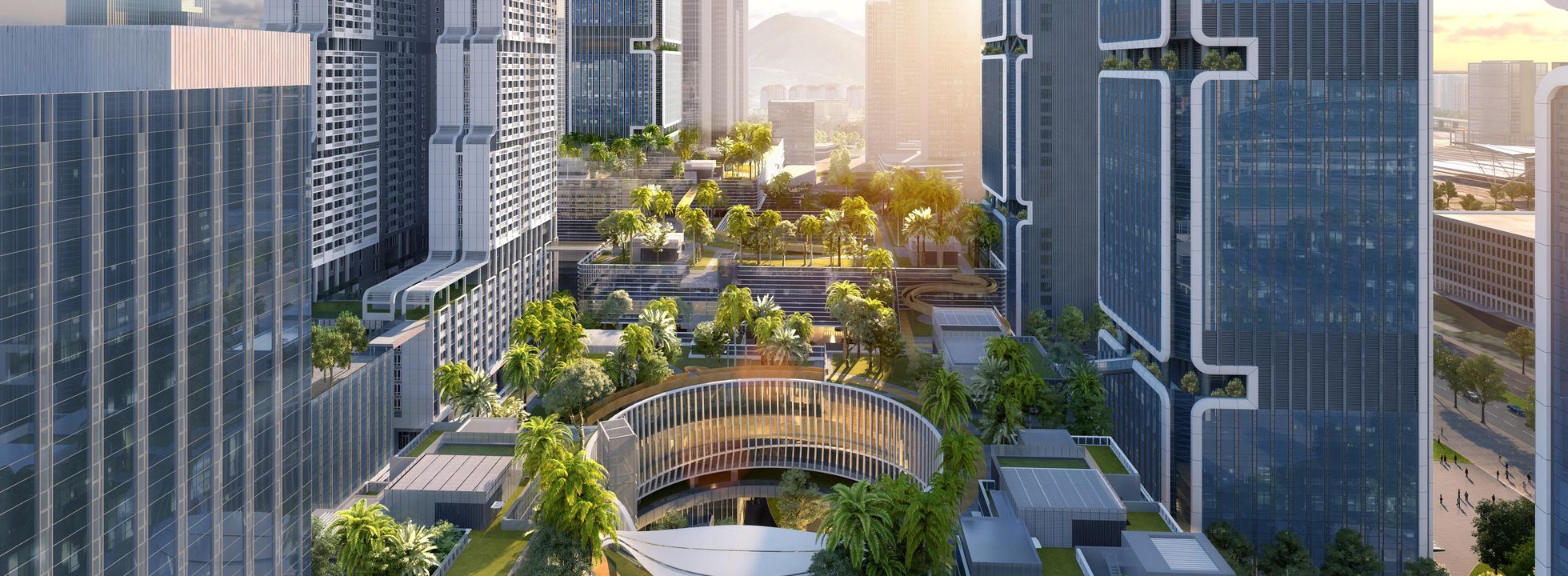
Nanshan Science & Technology Innovation Center
A platform for the rainforest
Approach
Designing places on site
HPP has been active in the Chinese market since 2002 and has its own offices in Shanghai (opened in 2006), Beijing (opened in 2017) and Shenzhen (opened in 2019). The breakthrough for our commitment was the competition we won in 2006 for the Expo Village at the World Expo in Shanghai 2010.
Multifaceted project teams for multifaceted cities
With our international team and experts from all disciplines, we have a special understanding of what it means to bring diversity, density, identity and health together in a Smart City.
We believe in the integration of the various disciplines available in our company when planning urban development: architecture, urban design and landscape architecture. All these experts help us to find the smartest ecological and functional solution for every area.
Alibaba Hangzhou Cloud Valley Campus, Changsha
Beixinjing Suzhou Greek Waterfront Innovation Park Community, Shanghai
Expo Village, Shanghai
International Finance Center, Moskau (Arge ASTOC/HPP)
Meixihu Lake International New Town Masterplan, Changsha
Nanjing Railway Station, Nanjing
Nanshan Science & Technology Innovation Center, Shenzhen
Suzhou Waterfront Core Area Design, Suzhou
Taopu City Design, Shanghai
Tusincere Yangze River Science & Technology Town, Shanghai
Xujiahui Sportpark, Shanghai
Yangpu Shiphouse Area Urban Design, Shanghai
Jinyu Xingfa Science Park, Peking
Our other services
Architecture
Design and execution for newbuild, refurbishment, conversion and listed building projects.
Interior design
Working environments and inspiring spaces that are exciting to be in and that foster identity.
Project management
Representing the interests of the client and ensuring the quality of the work produced.

